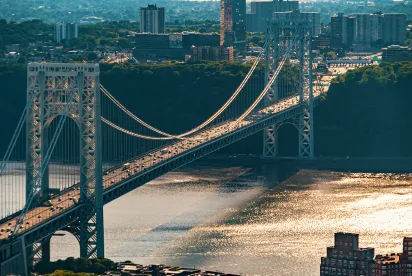In “Governor Cuomo’s “Tolling” of New York Statutes of Limitation Has Ended, But What Did It Accomplish?”, we examined the debate surrounding whether Governor Cuomo’s Executive Order No. 202.8 and subsequent orders up to and including Executive Order No. 202.67, which extended Executive Order No. 202.8 (collectively, the “Executive Orders”), actually tolled New York statutes of limitation and other litigation deadlines for the period of March 20, 2020 through November 3, 2020, or merely suspended them. For purposes of determining whether a claim or an appeal was timely filed, the answer to this question can have huge implications. If the Executive Orders merely accomplished a suspension, then any claim or filing deadline that would have otherwise lapsed during the period of March 20, 2020 through November 3, 2020 would need to have been filed no later than November 4, 2020—the day after the suspension period ended. On the other hand, if the effect of the Executive Orders was a true tolling of the statutes of limitation and other court deadlines, then any time that remained on the limitations period as of March 20, 2020 would be added back (and start to run again) once the limitations period resumed on November 4, 2020.
Over the past year, a number of New York trial-level courts that examined the issue interpreted the Executive Orders as truly tolling—rather than suspending—the limitations periods, but—until last month—none of the Appellate Division departments had ruled on the issue. That changed on June 2, 2021, when the Appellate Division, Second Department issued a decision and order in the case of Brash v. Richards, holding—with regard to whether a notice of appeal had been timely filed—that not only did the Executive Orders actually toll limitations periods (in that case, the time period to take the notice of appeal), but also that Governor Cuomo had the statutory authority to toll statutes of limitation via the Executive Orders.
Brash involved the defendant/respondent Richards’ motion to dismiss plaintiff/appellant Brash’s appeal of an order determining a motion in limine made to the trial court. Pursuant to CPLR 5513(a), an appeal must be taken within 30 days of service of a copy of the order with notice of entry. Brash was served with notice of entry of the trial court’s order determining the motion in limine on October 2, 2020, and Brash served and filed a notice of appeal on November 10, 2020—39 days after service of the notice of entry. Richards argued that the appeal was untimely because the Executive Orders merely suspended the applicable deadline through November 3, 2020 and, therefore, the notice of appeal should have been filed on November 4, 2020, the day after the suspension period ended.
The Second Department detailed the history and language of the Executive Orders and noted that the use of the term “toll” in Executive Orders 202.8, 202.67 and 202.72 “expressly and plainly” indicated that the Executive Orders were meant to toll, rather than suspend, limitations periods and deadlines. The Court further concluded that the Governor had the statutory authority to effect such tolling pursuant to Executive Law § 29-a(2)(d), which provides that, during a state disaster emergency, the Governor may by executive order “provide for the alteration or modification of the requirements of such statute, local law, ordinance, order, rule or regulation suspended, and may include other terms and conditions.” The Court emphasized that, under this provision of the Executive Law, the Governor is empowered not only to suspend statutes of limitation, but also to “alter” or “modify” limitations periods, which includes tolling those periods.
Accordingly, in Brash, given that the plaintiff/appellant’s time to take the appeal did not begin running until November 3, 2020, the appeal was timely taken within the applicable 30 day period and the Second Department, therefore, denied the motion to dismiss the appeal. Brash reinforces that the impact of Governor Cuomo’s Executive Orders will be felt in New York State litigation long after the pandemic subsides.


 />i
/>i
